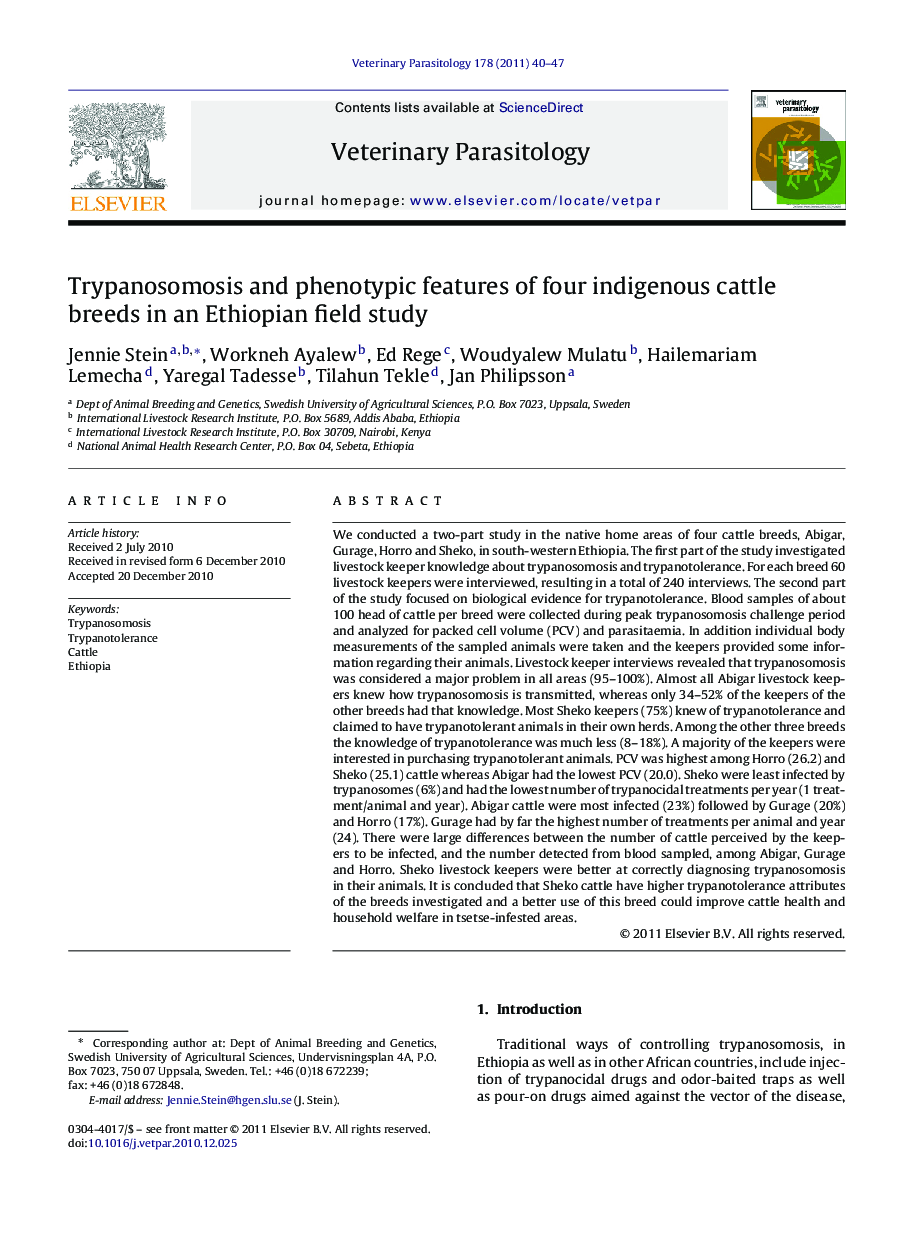| کد مقاله | کد نشریه | سال انتشار | مقاله انگلیسی | نسخه تمام متن |
|---|---|---|---|---|
| 5805765 | 1555726 | 2011 | 8 صفحه PDF | دانلود رایگان |

We conducted a two-part study in the native home areas of four cattle breeds, Abigar, Gurage, Horro and Sheko, in south-western Ethiopia. The first part of the study investigated livestock keeper knowledge about trypanosomosis and trypanotolerance. For each breed 60 livestock keepers were interviewed, resulting in a total of 240 interviews. The second part of the study focused on biological evidence for trypanotolerance. Blood samples of about 100 head of cattle per breed were collected during peak trypanosomosis challenge period and analyzed for packed cell volume (PCV) and parasitaemia. In addition individual body measurements of the sampled animals were taken and the keepers provided some information regarding their animals. Livestock keeper interviews revealed that trypanosomosis was considered a major problem in all areas (95-100%). Almost all Abigar livestock keepers knew how trypanosomosis is transmitted, whereas only 34-52% of the keepers of the other breeds had that knowledge. Most Sheko keepers (75%) knew of trypanotolerance and claimed to have trypanotolerant animals in their own herds. Among the other three breeds the knowledge of trypanotolerance was much less (8-18%). A majority of the keepers were interested in purchasing trypanotolerant animals. PCV was highest among Horro (26.2) and Sheko (25.1) cattle whereas Abigar had the lowest PCV (20.0). Sheko were least infected by trypanosomes (6%) and had the lowest number of trypanocidal treatments per year (1 treatment/animal and year). Abigar cattle were most infected (23%) followed by Gurage (20%) and Horro (17%). Gurage had by far the highest number of treatments per animal and year (24). There were large differences between the number of cattle perceived by the keepers to be infected, and the number detected from blood sampled, among Abigar, Gurage and Horro. Sheko livestock keepers were better at correctly diagnosing trypanosomosis in their animals. It is concluded that Sheko cattle have higher trypanotolerance attributes of the breeds investigated and a better use of this breed could improve cattle health and household welfare in tsetse-infested areas.
Journal: Veterinary Parasitology - Volume 178, Issues 1â2, 31 May 2011, Pages 40-47